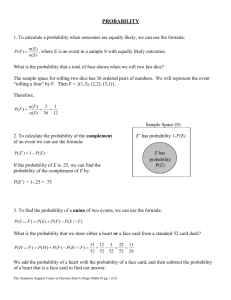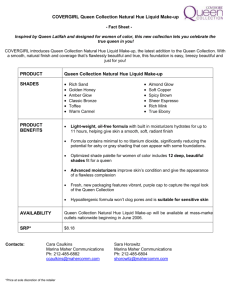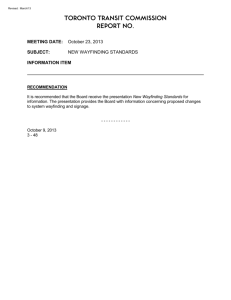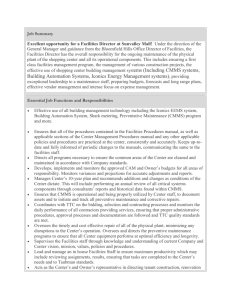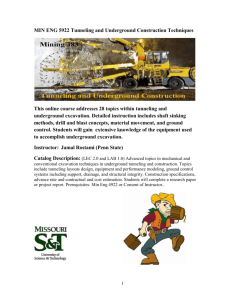full article - GeoEngineering Centre at Queen`s
advertisement
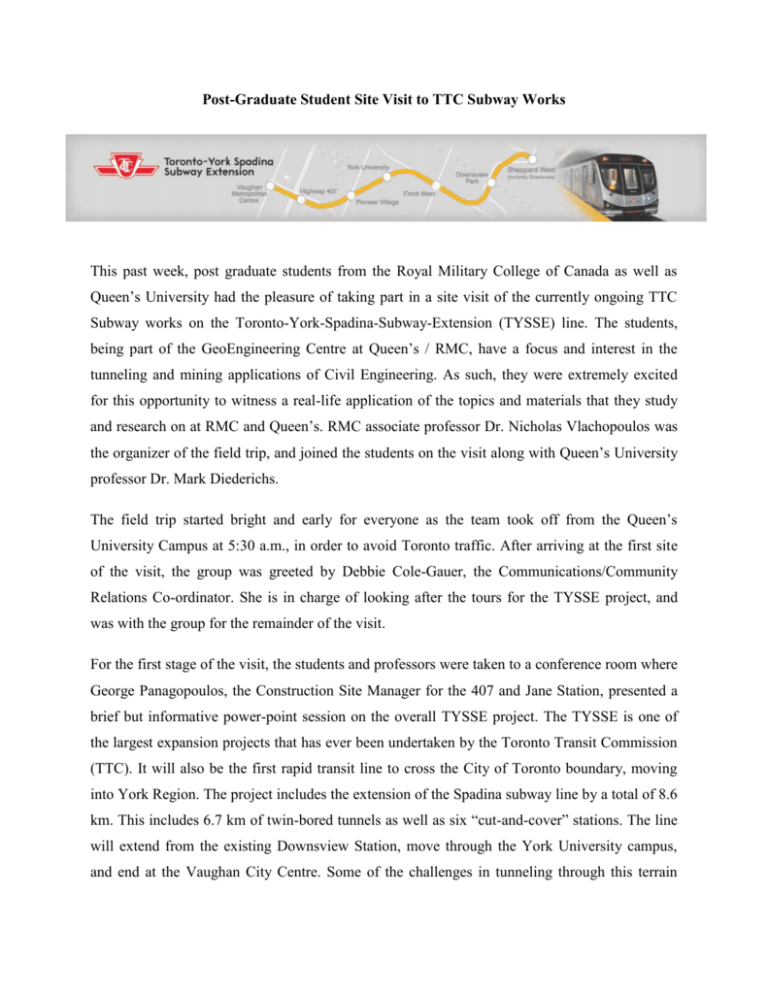
Post-Graduate Student Site Visit to TTC Subway Works This past week, post graduate students from the Royal Military College of Canada as well as Queen’s University had the pleasure of taking part in a site visit of the currently ongoing TTC Subway works on the Toronto-York-Spadina-Subway-Extension (TYSSE) line. The students, being part of the GeoEngineering Centre at Queen’s / RMC, have a focus and interest in the tunneling and mining applications of Civil Engineering. As such, they were extremely excited for this opportunity to witness a real-life application of the topics and materials that they study and research on at RMC and Queen’s. RMC associate professor Dr. Nicholas Vlachopoulos was the organizer of the field trip, and joined the students on the visit along with Queen’s University professor Dr. Mark Diederichs. The field trip started bright and early for everyone as the team took off from the Queen’s University Campus at 5:30 a.m., in order to avoid Toronto traffic. After arriving at the first site of the visit, the group was greeted by Debbie Cole-Gauer, the Communications/Community Relations Co-ordinator. She is in charge of looking after the tours for the TYSSE project, and was with the group for the remainder of the visit. For the first stage of the visit, the students and professors were taken to a conference room where George Panagopoulos, the Construction Site Manager for the 407 and Jane Station, presented a brief but informative power-point session on the overall TYSSE project. The TYSSE is one of the largest expansion projects that has ever been undertaken by the Toronto Transit Commission (TTC). It will also be the first rapid transit line to cross the City of Toronto boundary, moving into York Region. The project includes the extension of the Spadina subway line by a total of 8.6 km. This includes 6.7 km of twin-bored tunnels as well as six “cut-and-cover” stations. The line will extend from the existing Downsview Station, move through the York University campus, and end at the Vaughan City Centre. Some of the challenges in tunneling through this terrain include crossing through various different types of soils with the water table near the surface, crossing under large buildings, railway tracks, major highways, major utilities, conservation areas, and water-courses. After this introductory briefing, Frank Dempsey led a safety talk for all of the candidates of the tour. Everyone had to wear all of the Personal Protection Equipment (PPE) required at both sites. This included CSA green tag approved safety boots, hard hat, reflective vest, safety glasses as well as gloves. Safety is paramount for the TTC and they are proud to have a frequency of work related safety issues 30 percent lower than the average for Ontario construction sites. The first site that was visited was the Highway 407 station, located South-West of the intersection between Highway 407 and Jane Street. Here the students were able to witness an active construction site at work with all of its moving parts. The students were also able to see a typical tunnel – tunneled with a tunnel boring machine - in its final stages of construction. The station has a very modern look – resembling modern day airports from the outside - with lots of open space around it due to its location. There were not only typical construction tasks occurring on site but also some surveying was also witnessed, the operators utilizing Leica Total Stations that are used in Undergraduate studies by students at RMCC and Queen’s University. The second site that was visited was the Finch West Station, which is located just South-West of the intersection between Finch Avenue West and Keele Street. The group entered through a drop shaft just North-East of the station into the North side of the station. The main highlight for the students and professors here was the triple track structure that was constructed utilizing the Sequential Excavation Method of tunneling (S.E.M.). This tunneling location is special as it was the first site in North America to ever utilize this method of excavation. This site also contained a typical bored tunnel – which was lined with 5.4m (internal diameters) precast concrete segments. As in the previous site, the tour included a walkthrough of the station which was in the late stages of construction, utilities, and cosmetic materials such as tiling being put in place. For an impressive video showing the project’s tunnel boring machines “Yorkie” and “Torkie” at work, follow the link below. The TBM’s are seen completing a rare double breakthrough at the extraction shaft on Keele Street, the same shaft that was used to access the second site for the visit. https://www.youtube.com/watch?v=eyP46_H4Elc In the end, the site visit to the Toronto-York-Spadina-Subway-Extension line, was a success. Students and professors alike, were able to see various different tunnels and stations, as well as witness the many challenges involved when tunneling. This site visit helped enrichen the already top class education that students at both RMCC and Queen’s University are privileged to have, and hopefully future students will be able to take part in similar occasions. It is these experiences with real-life problems and solutions that add great value to the programs at both universities. A special thanks to all of the TTC personnel that made this visit possible. Daniel Felipe Cruz 2Lt 26305






